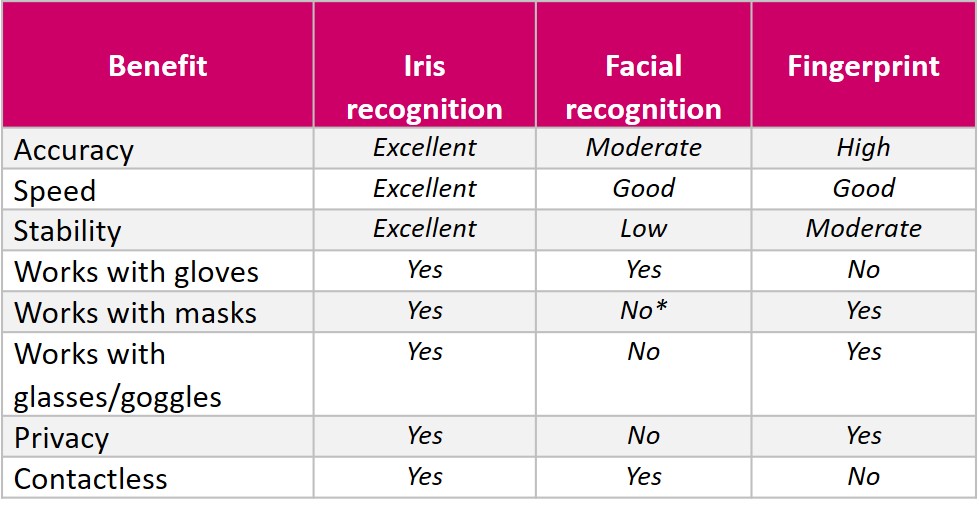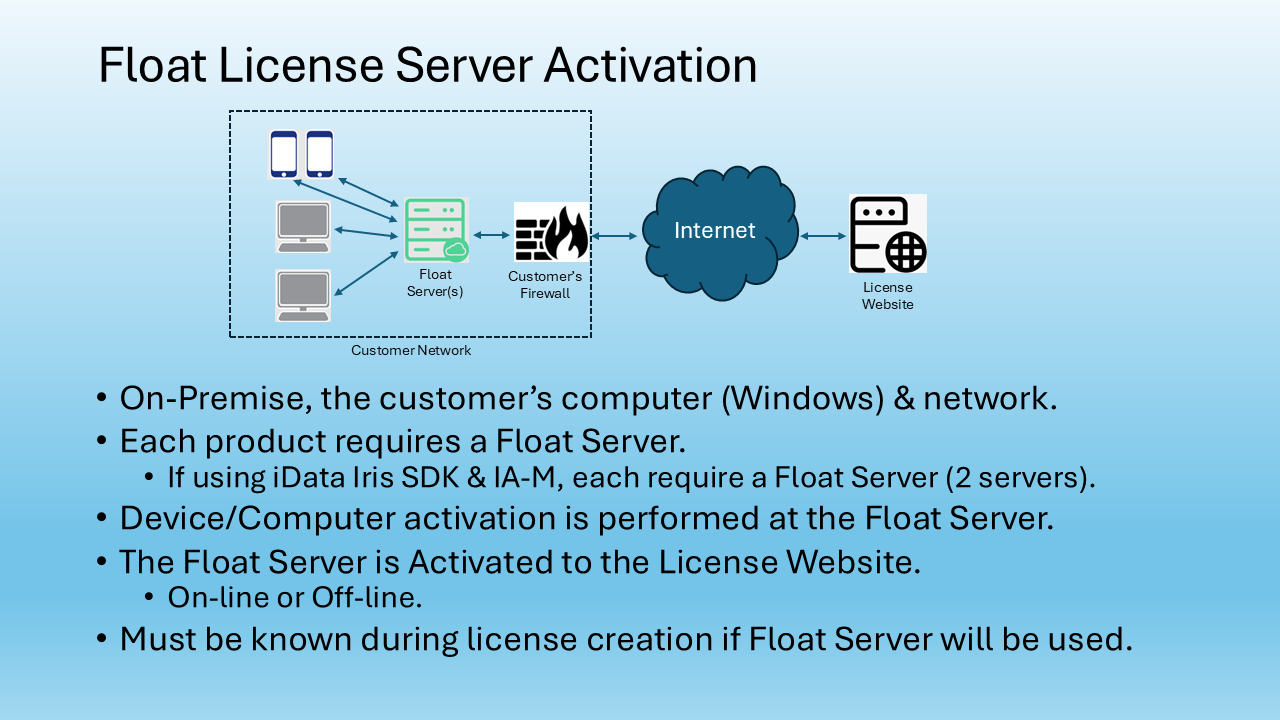By Mohammed Murad
In biometrics there is what we call the “big three.” That refers to the three most deployed biometric technologies – iris facial and fingerprint recognition. They are similar in that they are all based on unique measurements of the body, yet they are also very different. The table below looks at those differences.
Fingerprints
Fingerprint technology is one of the oldest biometric forms of identification. It measures the patterns made by the ridges and furrows on a person’s fingers.
Its accuracy rate is high and fingerprints tend to remain stable throughout a person’s life. But it cannot be used with gloves or dirty or injured fingers. People who work with their hands can damage or wear down their fingerprints making them unreadable.
It is not contactless and usually requires placing a finger or fingers on a scanner. According to medical professionals, viruses like the novel coronavirus can live on plastic and stainless-steel surfaces for two to three days. Scanners could transmit the virus if not sanitized after each use.
This technology requires people to register their fingerprints. Fingerprints cannot be registered without someone’s knowledge, so it does provide a potential level of privacy for users.
Facial recognition
Facial recognition technology identifies people using facial features. It recognizes people fairly quickly, but facial features change over time. Beards, masks, goggles and glasses can hinder identification. The technology is getting better, but it still has the lowest accuracy rate of the “big three.”
*Some vendors are looking to develop technology the works with face mask but its accuracy is debatable. It may work with some subjects in one-to-one verification but the jury is still out on attaining higher accuracy with mask. The technology is advancing, but it may still need more time.
The transmission of viruses and bacteria is not an issue as facial recognition is contactless and more expensive technology can be used at a great distance. It allows image capture without a person’s knowledge or consent. That has led to strong objections about the loss of personal privacy. And some cities and regions have banned facial recognition on those grounds.
Iris Recognition
Iris recognition is widely considered the most accurate and secure of the “big three.” It matches the data rich patters in a person’s iris which is the visible color portion of the eye surrounding the pupil. No two irises are the same (even identical twins have unique patterns) and the iris is stable from about the age of one, so it works well for registering children.
The technology can be used for people wearing gloves, masks, goggles and glasses. It works well in healthcare, agriculture and heavy manufacturing environments. It is also contactless. A person stands 30 centimeters to 1.2 meters from a camera to enroll and be identified. The process takes less than two seconds.
Iris recognition has fewer privacy concerns because people must actively participate in registration and identification. Images cannot be taken without the person’s knowledge.
Each of the “big three” biometrics are powerful identification and authorization tools. More organizations are adding biometric tools like these. And in many cases, we are seeing enterprises and governments taking the power of biometrics to the next level by deploying more than one of these solutions. Authorities are urging business to add more complex forms of authentication that includes biometrics. The selection of biometrics will solely rely on the application and need for security and accuracy.
(Mohammed Murad is vice president, global sales and business development, Iris ID)


